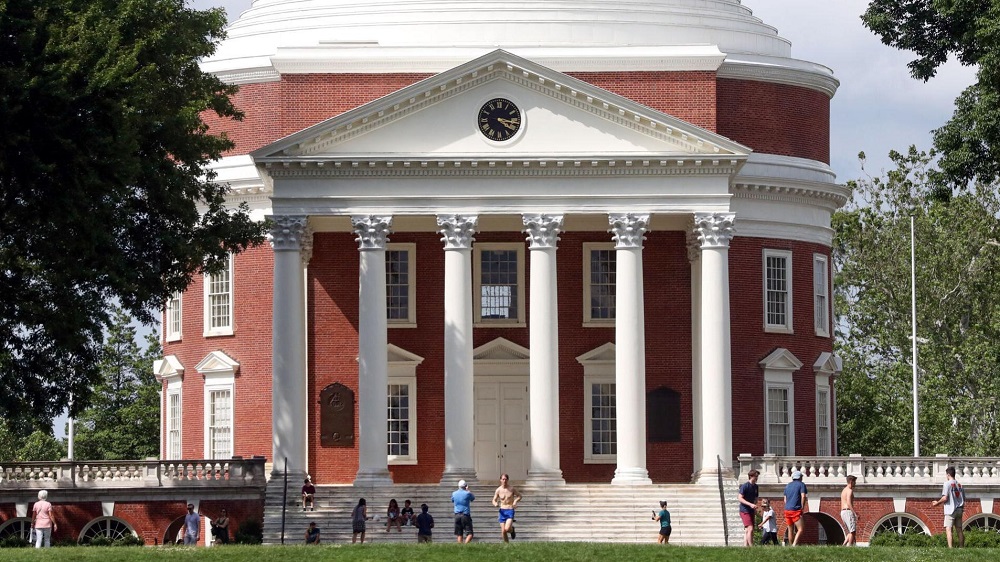Johns Hopkins University overview
Johns Hopkins University is a private institution that was founded in 1876. The University has an undergraduate enrollment of 6.3331 (fall 2020). The campus is urban. The campus is spread over 140 acres. It has an academic calendar that is based on semesters.
Johns Hopkins University’s ranking on the 2022 edition of Best Colleges was National Universities at #9. The price of tuition and fees is $58,720.
Johns Hopkins aims to provide its students with education and develop their capacity to continue learning throughout their lives. Also, promote the pursuit of independent and innovative research, and help spread the benefits of knowledge around the globe.
Johns Hopkins is a community committed to promoting the ideals of diversity and inclusion to achieve and sustain excellence.
Johns Hopkins University is divided into nine colleges with five schools geared towards undergraduate and graduate students.
Hopkins provides graduate programs which include the highly rated Bloomberg School of Public Health and the highly-rated School of Education, Whiting School of Engineering, School of Medicine, and the highly-rated Peabody Institute for music and dance.
The Homewood Campus, one of Hopkin’s four campuses located within Baltimore and surrounding Baltimore, is the principal campus for students in the undergraduate program.
Students who are first- or second-year students must be on campus. More than 1,400 students reside in Hopkins’ Greek community. Hopkins and Hopkins Greek community. Hopkins’ Greek community.
Hopkins has campuses to Hopkins also houses the School of Advanced International Studies located in Washington, D.C.; Bologna, Italy; and Nanjing, China. Johns Hopkins Hospital is a top-ranked hospital with highly recognized specializations.
Johns Hopkins University Transfer Acceptance Rate
Johns Hopkins has a transfer Acceptance Rate of 9.36 percent. These indicate the level of competition for making a move to the school.
To stand a good chance of being accepted into Johns Hopkins University, you must have a GPA of 3.93. Ideally, your GPA will be close to 4.00. Best of luck.
Johns Hopkins University Acceptance Rate
Johns Hopkins University has an acceptance rate of 9%.
Most of those accepted to JHU can show an SAT score between 1480-1570 and an ACT score of 34 to 35.
However, one-quarter of the applicants accepted to JHU scored above these limits, and one-quarter scored less than the upper limits.
The application deadline is January. 2. The application fee for Johns Hopkins University is $70.
Johns Hopkins University’s 2022 Rankings
Johns Hopkins University is placed:
- #9 in National Universities (tie)
- #42 in Best Undergraduate Teaching (tie)
- #16 in Best Value Schools
Johns Hopkins University Scholarships and Financial Aid
Assistance with scholarships is offered only to students from within the United States. These cover U.S. Citizens, permanent residents, DACA, and undocumented students.
We’re committed to assisting families and students afford the expense of a Hopkins education. Also, meet all of their requirements and provide a range of grants, no-loan financing packages, and other financial aid.
Johns Hopkins University Tuition and Fees:
- Tuition: $55,350
- Matriculation Fee: $500
- Room & Board (On-Campus Estimate):$16,310
- Room & Board (Off-Campus Estimate):$12,235
- Personal Costs: $ 1,118
- Books and Supplies : $ 1,250
- Average travel costs: $670.
Johns Hopkins University Information for Transfer In Students
The University will accept requests for transfers. The admission process to transfer to Hopkins is subject to availability and may be different from year to year.
Johns Hopkins University Transfer Application Requirements
A minimum grade point average of At-least 3.0 Grade point total is necessary.
Official transcripts. Students must submit school transcripts derived from the official high school. Also, the student must submit college transcripts directly supplied by the colleges you attended must be submitted.
Scores from the SAT: It is essential to keep in mind that you can provide scores for standardized tests. They’re not critical to the admissions procedure for transfer.
Letter of Recommendation The requirement is a letter of recommendation by a professor or teacher is necessary.
Essay This is the Common Application personal statement is obligatory.
National Association of College Admissions Counseling (NACAC).
The Application Fee is A non-refundable $70 fee to apply or waive. The application form accepted is the following one.
Interviews: Due to the sheer volume of applications, interviews aren’t available for those transferred.
Associate Degrees Required. Johns Hopkins welcomes transfer applicants from two-year and four-year universities and colleges throughout the United States and worldwide.
Apply Here For A Transfer To Johns Hopkins University
Johns Hopkins University Transfer Credit Policy
A Minimum Grade Minimum Grade: The student should have an A or better in all comparable courses in the subject matter.
Credits (Min/Max). The student must be full-time enrolled in an academic program for at least four consecutive terms, not including summer break. Also, should earn at least 60 hours of credit at Johns Hopkins.
Johns Hopkins University Frequently Asked Questions And Answers
What do I have to be able to get accepted?
Because applications are analyzed holistically, and there isn’t a secret formula to determine the ideal Johns Hopkins student, predicting every applicant’s chances of getting accepted is extremely difficult.
What could I do to boost my chances of getting accepted?
The most important you can do is to ensure that you fill out your application completely and submit all necessary documents to the application within the specified timeframe.
Additionally, you have to submit a complete and accurate description of yourself as a prospective candidate, your reasons for why you think Hopkins is the ideal choice for you, and the qualities you’ll be able to contribute to the Hopkins group.
I’ve heard that Hopkins recently updated the financial aid program at Hopkins. What’s changed?
Johns Hopkins has made a sincere commitment to offering blind admissions to applicants from the United States and will also remove student loans from any aid package.
What is the Early Decision Plan at Johns Hopkins?
Early Decision (ED) is a possible option that allows students who are sure that Hopkins is the only college they would like to attend to submit an application and receive an admissions decision before the deadline. The two Early Decision choices offered: Are early Decision I and Early Decision II.
Suppose you choose you to want to make an application to Early Decision II. In that case, your application and supporting documents must be received by January 3, 2022. If you decide to apply for Early Decision must receive your application and supporting documents by November 1, 2021.
This early decision agreement is binding which means you cannot apply to another school within the early decision program. Parents, you, and your secondary school’s counselor must sign a document that you agree to be enrolled at Johns Hopkins if admitted and eliminate any early action applications for other institutions.
Early Decision I applicants will receive their decisions by the middle of December. Applicants who submit applications in the category of Early Decision II applicants will be notified of the outcome by mid-February.
Does it mean that I need to use an earlier decision?
If Johns Hopkins is your first college option and you’re confident that you’d like to make the leap and join if you’re accepted, we recommend you apply for an early decision.
Does Johns Hopkins offer Early Action or rolling admission?
No. admission is available only via the Early Decision and Regular Decision process.
Am I able to have the option to be considered for Early Action or Early Decision in a different school or the Early Decision I or II at Hopkins?
Because Early Decisions I and II are binding to agreements, students are allowed to apply for consideration to get considered to be eligible as eligible for Early Decision to one college at a time.
The contract is binding and states that if you’re accepted to Hopkins in the initial Decision I or II, you must withdraw all other applications not yet completed and be committed to registering with Hopkins.
What’s the difference between early Decision I and II?
First of all, the deadlines and notifications must be submitted on the specified dates. The deadlines and notification deadlines are set early. The decision I applications are due November 2, 2020, and the date to release the decision is November 11, 2020.
Early Decision II applications are due January 4, 2021, with an announcement date of February 12, 2021.
The requirements for applications are the same throughout Early Decision applications, regardless of the option you choose.
When you use an Early Decision application, any choice you select will result in a legally legal and binding agreement.
The admission process will begin at Hopkins when you’re accepted and accepted. It will close all applications in the process of acceptance.
What are the possible options to receive financial assistance?
If you’re an Early Decision candidate, you may apply for any aid based upon need from Johns Hopkins.
The choice to apply early is not a limitation on the possibilities of financial aid or the opportunity of merit-based scholarships.
What is the best way to follow if I am accepted to the Early Decision?
Suppose you are not admitted to the Early Decision I. In that case, you may be refused admission and rated as a regular-decision applicant or rejected. If you don’t get admitted to Early Decision II, you may be refused entry or placed on a waitlist.
I hope this article was helpful, And remember that sharing is sharing.



